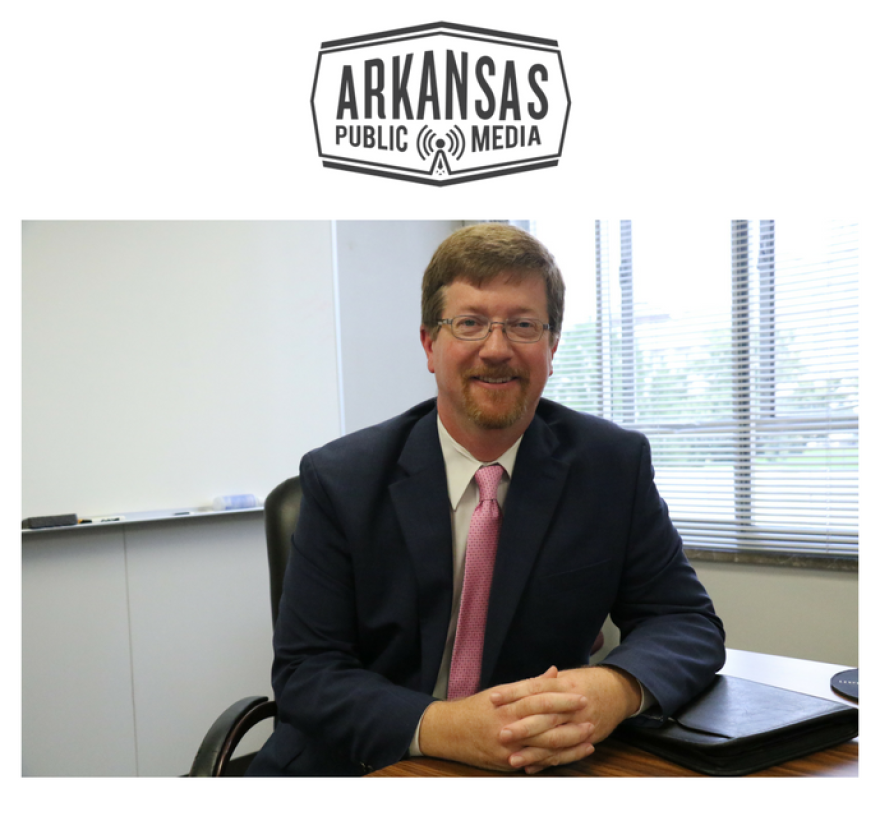Arkansas has until this fall to rewrite a wide-ranging education plan under the new federal law, Every Student Succeeds Act based on stakeholder feedback solicited on a draft this summer.
The Act replaces the Bush Administration era’s No Child Left Behind. In contrast to its predecessor, the new federal law moves away from ranking schools based on standardized tests and toward state control and a more diverse set of metrics.
Test scores, once 70-80 percent of a school rank, will be counted closer to 50 percent. The state proposes to weigh students’ growth as heavily as their one-time test scores in order to rank school performance.
Arkansas Public Media’s Sarah Whites-Koditschek spoke with Education Commissioner Johnny Key about what’s changing under the new plan.
So far, do you anticipate any changes that have come out of the feedback?
There have been significant changes that have come out of the feedback. For instance, we are looking at our long-term goals. ESSA requires each state to set long-term goals. We had proposed 90 percent in 12 years, that all of our students would be at 90 percent achievement on the state test, and a lot of our stakeholders said, that sounds a lot like No Child Left Behind. No Child Left Behind was 100 percent. Well we looked at that and we did some analysis. And when we looked at our rigor of our standards now, compared to what they were under No Child Left Behind, we looked at the rate of improvement under the old standards versus what we’re seeing statistically on the new standards. We realized, you know, 90 percent, while it was ambitious, which was one of the requirements that we have ambitious long-term goals, it may not have been practical. So we are backing it down to 80 percent.
What are kind of the big ways in which ESSA is different that are important for Arkansas and how do you get buy-in from all those stakeholders for a plan when they might have reservations about aspects of No Child Left Behind that didn’t seem to change very much?
I think that’s a great question, and that’s a question we’ve been asking ourselves. What’s different about ESSA is that it really puts the responsibility, returns the responsibility, for driving improvement to the local level. Under No Child Left Behind, the department, again, would identify a school as a priority school or a focus school or some level of needing improvement and then based on that label the department would go directly into that school and say ‘Here are some things you need to do.’ ESSA gives us kind of a revamp of that so that that decision making isn’t from the department to the school, but it should be driven from the school to the district and then the district determines what support they need from us. So the districts will come and they may say, ‘Look, would you please review our district improvement plan?’ and depending on what level of support they need, then we determine what team needs to go in and help them. Whether it be curriculum, you know, whether it be human resources, a wide range of areas that we could provide that support.
Under ESSA, [student] growth is weighed about as much as achievement [on] standardized tests, right? So can you explain a bit about what that might change in Arkansas?
One of the things that we got a lot of feedback on from educators is that emphasis under No Child Left Behind on achievement and especially with some of our districts where, you know, the kids started at such a deficit that they didn’t feel like we were giving them enough credit that they were getting credit for the growth those kids did get. Schools should be given that credit. They should be recognized for moving kids. Now, obviously, we want kids to be on grade level. So it’s not just enough for them to say, ‘Well, we’ve grown one grade level.’ Well, that’s great, but if they were three grade levels behind when they started then by the time they get to high school, there’s still going to be a deficit. So we don’t want to just totally throw out achievement, but we can balance it, and that’s what ESSA gives us the opportunity to do.
How does ESSA focus on disadvantaged students, minority students, or students with disability, English Language Learners, how does it focus on those particular groups?
Well if you look under No Child Left Behind, they, there were opportunities there where folks, they focused on the bubble kids. That’s a term that was those kids that are just barely below where they need them to be and, ‘Let’s just put all kinds of intense focus on moving it up so our numbers look better.’ Well the way we’re approaching it is, we want you to move all kids. So you can’t just focus on the upper income kids and move those kids that are not performing and if you do that, you’re going to be fine. We’re really saying, ‘Look, you’ve got to get down and move those English Language Learners. You’ve got to get those kids moving. You’ve got to get the minority kids moving, you’ve got to get the poor kids from low-income families, you’ve got to get all them moving. We’ve got to get special ed. kids moving.’ All those student groups, if you read the ESSA plan, you can see where they fit in that.
This story is produced by Arkansas Public Media, a statewide journalism collaboration among public media organizations. Arkansas Public Media reporting is funded in part through a grant from the Corporation for Public Broadcasting, with the support of partner stations KUAR, KUAF, KASU and KTXK and from members of the public. You can learn more and support Arkansas Public Media’s reporting at arkansaspublicmedia.org. Arkansas Public Media is Natural State news with context.



